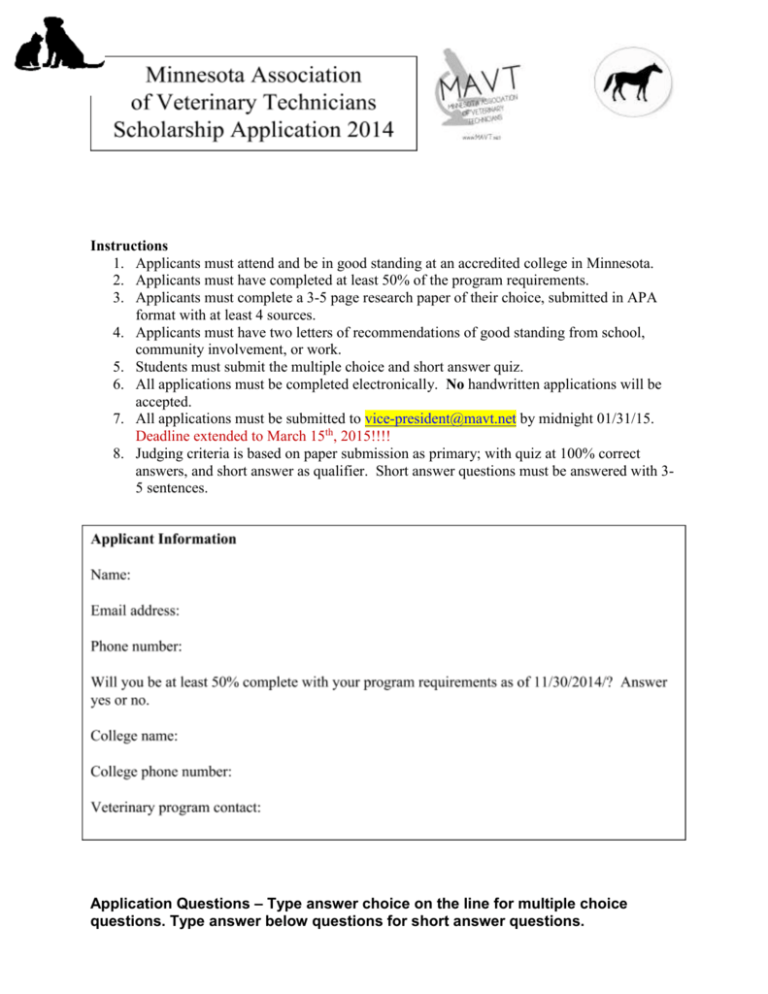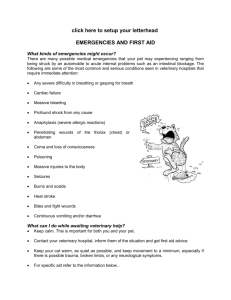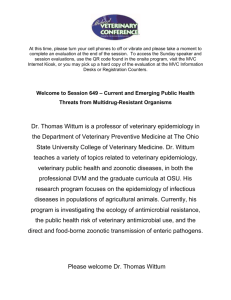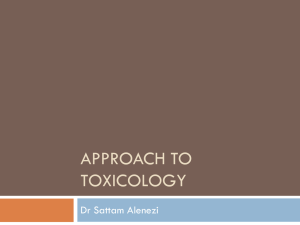Application Questions
advertisement

Instructions 1. Applicants must attend and be in good standing at an accredited college in Minnesota. 2. Applicants must have completed at least 50% of the program requirements. 3. Applicants must complete a 3-5 page research paper of their choice, submitted in APA format with at least 4 sources. 4. Applicants must have two letters of recommendations of good standing from school, community involvement, or work. 5. Students must submit the multiple choice and short answer quiz. 6. All applications must be completed electronically. No handwritten applications will be accepted. 7. All applications must be submitted to vice-president@mavt.net by midnight 01/31/15. Deadline extended to March 15th, 2015!!!! 8. Judging criteria is based on paper submission as primary; with quiz at 100% correct answers, and short answer as qualifier. Short answer questions must be answered with 35 sentences. Application Questions – Type answer choice on the line for multiple choice questions. Type answer below questions for short answer questions. ____ 1.Which of the following absorbs the most x-rays and appears white on a developed film? a. b. c. d. ____ 2. How many milliliters of a drug with a concentration of 100 mg/mL should be given to a 75 lb dog if the dosage is 2 mg/kg? a. b. c. d. ____ Proestrus Anestrus Diestrus Estrus 5. Fentanyl transdermal patches are used most commonly in veterinary medicine to control: a. b. c. d. ____ Purple Red Green Yellow 4 The presence of predominantly anuclear cornified epithelial cells indicates: a. b. c. d. ____ 0.68 0.34 0.75 1.5 3. What color do gram-positive organisms appear after a Gram stain? a. b. c. d. ____ Fat Air Metal Bone Diarrhea Vomiting Seizures Pain 6. Borrelia burgdorferi is the organism which causes: a. Canine parvo virus b. Kennel cough c. Lyme disease d. Ringworm ____ 7. When giving an intramuscular injection into the semitendinosus or semimembranosus muscles, which nerve must be avoided? a. Coccygeal b. Cluneal c. Fibular d. Sciatic ____ 8. Dehiscence is: a. b. c. d. ____ The removal of suture material from its sterile package The splitting open of a surgical wound The removal of a surgical drain The sound a snake makes as it's being anesthetized 9. Which antibiotic class cannot be given to young canines during the rapid growth phase due to the potential for articular cartilage lesions? a. b. c. d. Tetracyclines Aminoglycosides Fluoroquinolones Sulfonamides ____ 10. The upper fourth premolar communicates with which sinus? a. b. c. d. Mandibular Occipital Maxillary Orbital ____ 11. The pet is to be prepped for a popliteal lymph node biopsy. What part of the body is prepped? a. b. c. d. Caudal aspect of the stifle Cranial aspect of the elbow Medial aspect of the thigh Cranial aspect of the stifle ____ 12. A cat on intravenous fluids must receive 30 ml/hr normal saline. If this cat has a drip set that provides 60 drops/mL, which of the following is the correct drip rate? a. b. c. d. 1 drop per 2 seconds 1 drop per 6 seconds 3 drops per second 16 drops per second ____ 13. Colic is a general term for: a. b. c. d. Muscle stiffness Restlessness Lameness Abdominal pain ____ 14. A cat that weighs 5 kg is given 0.1 ml of a drug with a concentration of 10 mg/ml. What dose did this cat receive? a. b. c. d. 0.05 mg/kg 0.2 mg/kg 2 mg/kg 25 mg/kg ____ 15. Why must reptiles be exposed to full-spectrum artificial light during normal daylight hours? a. b. c. d. To enable proper elimination cycles To aid in regular shedding cycles To help prevent metabolic bone disease To help prevent skin infections ____ 16. How is the hematocrit affected by dehydration? a. b. c. d. Decreased No change Increased Dehydration is not evaluated with the HCT ____ 17. Which is not a fat soluble vitamin? a. b. c. d. Vit E Vit B Vit A Vit D ____ 18. Epinephrine: a. b. c. d. Increases the heart rate Decreases the heart rate Decreases the blood pressure Reverses the effects of acepromazine ____ 19. Which pair of agents has the most similar effects? a. b. c. d. Anticholinergics and sympathomimetics Anticholinergics and cholinomimetics Sympathomimetics and sympatholytics Sympatholytics and anticholinergics ____ 20. Which of these drugs is not an antifungal drug? a. b. c. d. Griseofulvin Clotrimazole Ketoconazole Sulfadimethoxine 21. Why do you want to be a Veterinary Technician? 22. Describe the key points to be covered with a client that has a new puppy? 23. In the Minnesota Veterinary Practice Act, what tasks are veterinary technicians not allowed to do? 24. Choose a zoonotic disease and write how you would explain this disease to the client and what steps are necessary to prevent transmission?











